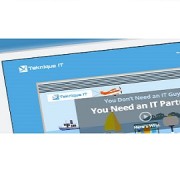How to Use Mobility to Increase Productivity in the Office
Mobile solutions are critical in integrating business and technology. Businesses failing to invest in mobility technology risk being left behind. This means incorporating mobile technology into every aspect of the business, to keep employees as connected as the customers being served.
In our mobile world, employees need access to network resources when they’re away from the office. Remote network access makes it possible to work from anywhere — whether connecting from a hotel room, telecommuting, or uploading data from a customer site.
Mobility in the Workplace
Most businesses already have some form of mobility technology in use. Productivity and efficiency increase when employees can access applications and files remotely, attend meetings virtually, and collaborate with teammates in real time.
Anytime, Anywhere Access. Remote technology applications allow users to stay productive away from the office with anytime, anywhere access to their computers. Mobile technology is all about on-the-go convenience; to be able to transfer files between devices without email or USB drives. Or be able to print documents from a remote computer to a local printer. With services such as these, IT can perform maintenance without interrupting end-users.
Flexible Work Hours. Mobile technology helps with a lot of human resource dilemmas. A team member being on site in Denver, but still be able to attend an important meeting in New York. Or when a key staff member is home with the flu. Inclement weather, remote workers can still get tasks done when the roads are closed, or the office has no power. Remote tech eliminates unnecessary travel and the need for onsite data exchange.
Boosts Collaboration. Cloud computing can also improve productivity. Employees can easily access installed company software while away from the office. This is another way of addressing the needs of remote workers. Employees everywhere can access and work on the same files without emails back and forth with changes. Easier collaboration improves productivity; by making information sharing quicker, projects progress faster.
And it’s only going to get better! Research shows that technology-related productivity in the workplace has increased by 84% since the 1970s. Mobile phones, email, and business software are responsible for the increase, according to a report by O2 Business. 22% of further growth is predicted for 2020 as internet speeds increase and more business choose tablets for the workplace.
Mobility Device Management
The growth of mobile devices in the workplace creates new concerns for secure access to sensitive information. A mobile device management plan will keep all mobile devices accessing your work network secure and even allow for remote deletion of data if an employee loses a device or leaves the organization. Talk to us if you need to manage all of the mobile devices accessing your network and want to ensure you have the right security in place.





